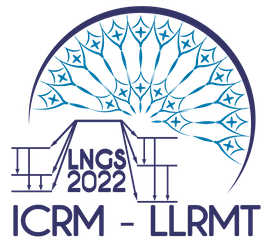Speaker
Description
The AMoRE (Advanced Mo based Rare process Experiment) is an international collaboration for the neutrinoless double-beta (0ν𝛽𝛽) decay of the $^{100}$Mo isotope with cryogenic detectors using molybdate (100MoO4)-based scintillation crystals. The process requires that the detector apparatus and its components, scintillating crystals and initial materials used for the crystal growth be extremely low in radioactive isotopes whose decays may generate background noise signals in the region of interest.
The present study summarizes an ICP-MS analysis program conducted for the AMoRE experiment. All the tests were performed at class 1000 clean rooms in the Center for Underground Physics (CUP) at IBS, Korea. An ICP-MS machine, Agilent 7900, was used for the trace analysis.
Firstly, the $^{100}$MoO$_{3}$ powder as one of two main initial materials for the crystal growth was studied in the analysis. Prior to a usage enriched $^{100}$MoO$_{3}$ powder was deeply purified at the CUP and to ensure its ultra-radio-purity, a sample preparation technique with a UTEVA resin was developed for Th and U analysis with ICP-MS. The technique proved the detection limit down to a few ppt by means of high separation of Mo-matrix and efficient analyte’s recovery.
Copper is another important sample to be tested because Cu is used in the detector unit assembly frame and shielding components for the AMoRE detector. To determine the most appropriate one, several types of high purity Cu were measured: Cu-OFE (Aurubis and Mitsubishi Materials) and Cu-NOSV (Aurubis). To avoid a matrix effect, a solid phase extraction with UTEVA resin was applied for accurate and sensitive Th and U analysis through the efficient Cu-matrix separation. Such a technique allowed to reach the detection limit below 0.5 ppt.
Indeed, the closest part to the scintillating crystal in the detector assembly is the 3M Vikuiti ESR film used as a light reflector. Two types of the Vikuiti film, a roll and a sheet, were checked for the radiopurity. Polymeric matrix of the film was decomposed in a microwave ashing machine. The dry ash was dissolved and subjected for Th and U measurements. The analysis has shown low contaminations of Th and U in the film at about 10 ppt.
In conclusion, ICP-MS in tandem with suitable sample preparation method is a powerful technique which can support a big part of radioassay program for a project like the AMoRE. In some cases, it may give much better sensitivity than the other methods like HPGe or NAA.

